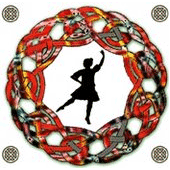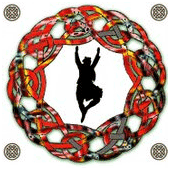 |
 |
 |
Copyright © 2008 SCHDA
All Rights Reserved
Highland Dancing is of military origin and was only performed by men up until the early 1900's. The Highland Fling is by far the oldest, dating back to the time of the Roman occupation of ancient Caledonia. Steps have changed throughout the millennia mostly due to the French influence in Scottish history, but the original meaning of the dance - a victory celebration - remains. Traditionally, Highland dancing is done to bagpipes. The version pipers play today dates back to the 16th Century, when the MacCrimmon family, pipers for the McLeod of Harris, worked out not only the form of the bagpipes, but also the intricate fingering on the chanter.
Highland Fling is a dance of victory in battle. Traditionally, the ancient warriors and clansmen performed this dance on the small round shield called a targe which they carried into battle. One can understand the quick footwork and dexterity of the dancer when you realize that most targs carried a pinpoint sharp spike of steel projecting some 5-6 inches from its center. A false or careless step could be more than painful !
Sword Dance "Ghillie Callum" is an ancient dance of war of the Scottish Gael. It is said to date back to King Malcolm Canmore. Tradition says the original Ghillie Callum was a Celtic prince who was a hero of mortal combat against one of MacBeth's chiefs at the Battle of Dunsinane in 1504. He is said to have taken the chief's sword, crossed over it with his own on the ground before him, and danced over them both in exultation.
Seann Triubhas is pronounced 'shawn trews' in Gaelic. In English, it translates to 'old trousers'. After Bonnie Prince Charlie's defeat at Culloden, which ended the 1745 Rising of the Clans, Parliament banned the kilt and bagpipes as instruments of war. This ban, which broke the strength and heart of the Highlands, was lifted some 30 years later, when tartan material became a fashion rage in London. The dance depicts a Scot kicking off his hated lowland britches and shows his joy of again being able to return to his traditional Highland dress.
Strathspey and Highland Reel hav obscure origins. Legend has it that the reel originated with well-wishers waiting for the minister to arrive at the church for a wedding on a cold day. The chilly group danced as a means of keeping warm.